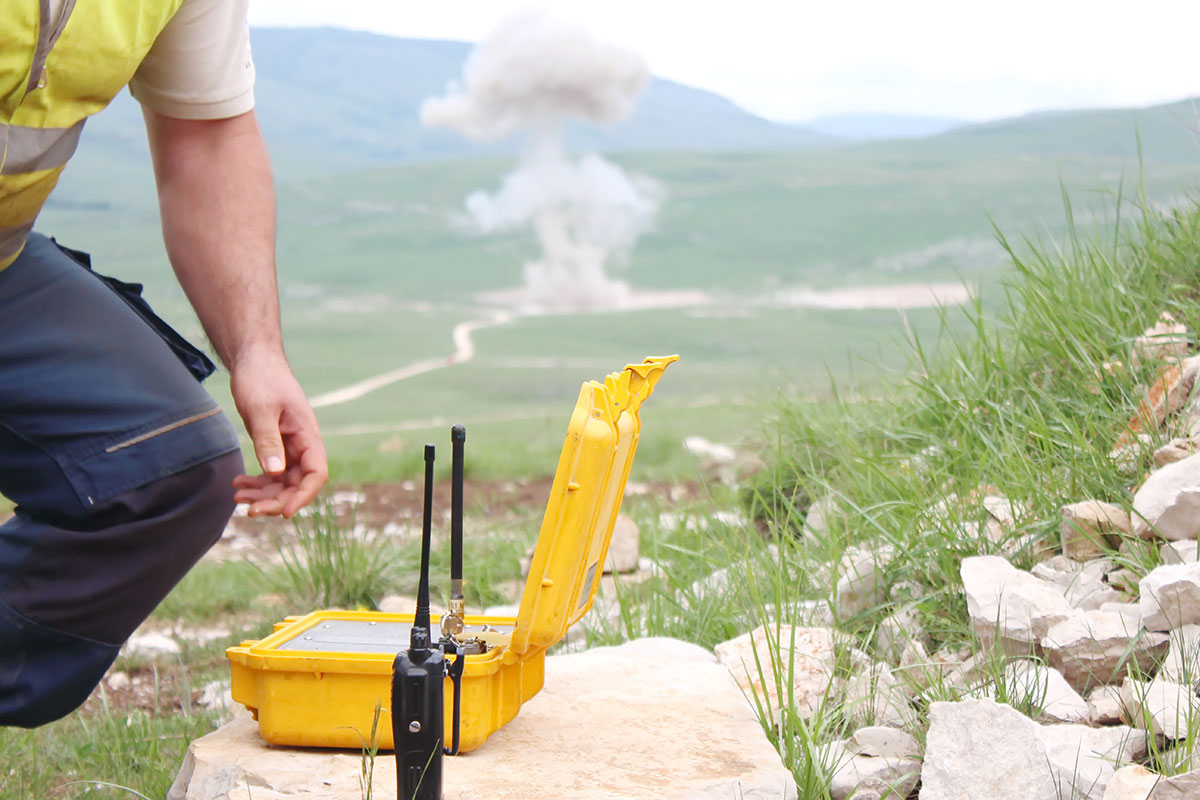Explosive Waste Disposal

Hazardous waste comes in three forms: listed, characteristic, and mixed waste. Each form may require different waste management strategies, so it’s important to understand what you’re dealing with before you execute any explosive waste disposal. Explosive commercial waste most often falls under the characteristic category, because of its reactive nature.
Characteristic wastes are those that display at least one of the following characteristics:
- Ignitability: Liquids with flashpoints below 140°F, non-liquids that can cause fire, and ignitable compressed gases and oxidizers
- Corrosivity: Aqueous wastes with a pH less than or equal to 2, a pH greater than 12.5, or with the ability to corrode steel
- Reactivity: Hazardous waste that is unstable, reactive with water, gives off toxic gases, and/or is capable of detonation when heated or under normal conditions
- Toxicity: Wastes that should not be ingested or absorbed
If the waste displays a hazardous component and a radioactive one, it is classified as a mixed waste and is regulated under the Atomic Energy Act as well as the Resource Conservation and Recovery Act (RCRA). Clean Management Group specializes in explosive waste disposal, ensuring we uphold the proper handling and compliance of hazardous and radioactive materials through our mixed waste disposal services, ensuring safety and adherence to federal regulations.
You can find all of this information and more on the EPA’s Hazardous Waste page under the Characteristic Wastes heading. Further information can be located in the Code of Federal Regulations Title 40 §261.23 Characteristic of reactivity.
According to CFR 40 subchapter 261.23, a solid waste is considered explosive material if it displays any one of the following eight characteristics:
- It is unstable under normal conditions and undergoes chemical change without detonation
- It reacts violently in the presence of water
- It creates explosive or potentially explosive mixtures with water
- It produces toxic gases that are harmful to human health or the environment when it is mixed with water
- It produces cyanide or sulfide that, when exposed to specific pH conditions, poses health issues to humans and/or the environment
- It can detonate or explode when heated
- It can detonate or explode under normal temperature and pressure conditions
- It is a forbidden or otherwise defined explosive as determined by 49 CFR 173.54, 49 CFR 173.50, or 49 CFR 173.53.
Clean Management Group offers nationwide explosive waste disposal services tailored to industries like manufacturing, government, and chemical sectors. Our expertise includes handling explosive materials such as propellants, fireworks, ammunition, and airbag inflators, ensuring safe and efficient disposal.
Explosives can be further broken down into Division 1.1 (formerly known as Class A) and Division 1.3 (formerly known as Class B explosives). Division 1.1 explosives are capable of producing a “mass explosion hazard,” while Division 1.3 explosives can generate a fire hazard and a minor blast or minor projection or both, but not a mass explosion hazard like Division 1.1.
Some common examples of explosive waste include fireworks, ammunition, rocket motors, propellants from demilitarization efforts, detonators, and airbag inflators. Explosive waste often comes from businesses in government, manufacturing, and chemical industries.
To learn more about how our explosive waste disposal company can assist your business, contact Clean Management today.






